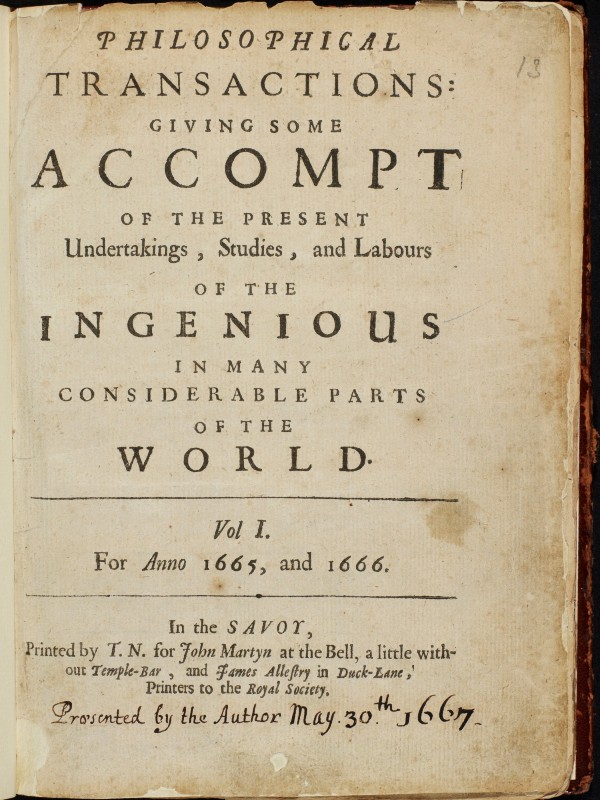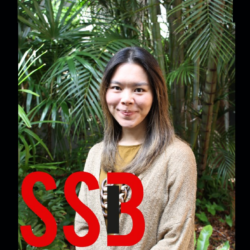Rethinking the Link Between Learned Societies and Academic Journals

It has been almost a decade since I began thinking about academic publishing and learned societies. My team and I spent four years digging through the minute books, correspondence and reports held in the archives of the Royal Society of London, and almost as long again processing, analyzing, writing and revising our history of scientific journals. The book is out at last, and now there is some space to reflect.
We originally set out to investigate the history of scientific journal publishing, but, immersed in the archive and history of the Royal Society, we couldn’t help noticing the changing relationship between journals and learned societies more generally.

Most often, when I’m asked about learned societies and journals, the context is economic. It’s easy to see why, as many society treasurers or journal directors are currently worried about the likelihood of journal publishing being a source of income for societies in the future. For those people, our historical findings are, perhaps, not initially reassuring. It’s clear that, for most of their history, scholarly research journals have not been money-making enterprises. As one commentator in 1895 put it, the publishing expenses for research papers are “in very many cases, very heavy” but “the public which buys any particular scientific publication is very limited.” (Lord Rayleigh, secretary to the Royal Society, writing to HM Treasury; see Fyfe 2015 and 2022)
Some magazines with a more newsy approach to science have found enough paying customers to cover their expenses, but research journals in the eighteenth and nineteenth centuries depended upon subsidies from learned society members, royal patrons, wealthy donors or, more recently, industrial sponsors and research funding agencies. It was only in the 1950s and 1960s that the development of an international market of library subscribers made it possible for research journals to find enough paying customers to cover their expenses, let alone to generate net income. But, the ability of library budgets to support the growing number of increasingly expensive journals was short-lived, as the Royal Society subscription numbers below demonstrate.

In historical terms, the profitability of research journals in the third quarter of the 20th century appears as little more than a blip. In the long period before library subscriptions, journals were sustained by building a portfolio of multiple smaller income streams to support the cost of journal publishing. Similar approaches are being used in the transition to open-access publishing.
It’s important to realize that the older approach to journal sustainability was grounded in a non-commercial understanding of ‘circulation.’ The circulation and dissemination of their journals did matter to learned societies and academies in the eighteenth and nineteenth centuries, but not for financial reasons. The Royal Society gave free copies of its journals to its fellows, to the libraries of other learned societies, to the libraries of universities, and to a variety of learned institutions across Britain, Europe and (some of) the rest of the world (see below). This was a practical way of ensuring that its journals reached the scholars, and scholarly communities, most likely to be interested. Some organizations reciprocated, sending their own journals to the Royal Society’s library. But, it was not cost-neutral. An internal review in 1954 revealed that the society spent around £3,300 each year on the production and shipping of these copies, and only received around £900-worth of journals for its own library in return.

This approach to circulation proved to be economically unsustainable as the output of scientific research expanded in the 20th century, and as the post-war internationalization of science increased the number of learned institutions needing access. A technological solution has been dreamed of since the 1950s, but it is only recently that electronic distribution might make a non-commercial, mission-driven approach to the circulation of knowledge affordable for some learned societies once more.
But money – whether as subsidy or income – is not the only thing that connects learned societies and journals. Both are associated with communities of scholars: the members of societies, and the authors, readers, reviewers of journals. The overlap between these communities explains why many societies run journals and why some journal communities ended up establishing societies to support them. Less commonly noted, however, is that the relationship between a journal community and a society community is not single or fixed.
When the Philosophical Transactions was founded in 1665, the fellows of the Royal Society were not initially central to its authorship or its editorial/reviewing processes. But, at a time when the number of English-speaking scholars interested in the sciences was tiny, they were its core intended readership. During the 18th and 19th centuries, the journal became closely associated with the Royal Society, and the fellows of the society came to be the major source of content (either as authors themselves, or by communicating papers from their own networks). As editorial and reviewing processes became more complex, the fellows’ involvement in (and control of) these processes marked another way the Transactions had become a journal of, rather than for, the Royal Society. The intended audience of readers now stretched far beyond the fellowship of the society.
Over the course of the 20th century, the changing scale and nature of the scientific enterprise has shifted the relationship between the fellows of the society and the communities associated with the journal. Fellows came to be just a tiny proportion of the authors and readers of the journals, and by the 1990s, they had ceased to be the sole source of editorial and reviewing expertise. In 1995, a publications review surveyed the fellows about the journals, and revealed little willingness to “‘publish their own (or their younger colleagues’) papers” there; nor did the fellows admit to reading the journals more than “occasionally.” The fellows may still have expressed ‘goodwill’ towards the journals, but the mismatch between ‘the society community’ (small, British) and ‘the journal community’ (large, international) meant that the fellows lacked the sense of ‘ownership’ of the journals they had once had. For some of the fellowship and staff in the 1990s, the journals’ main function for the society seemed to be to generate income.
There are undoubtedly still academic journals, likely in small specific fields, which remain tightly associated with a specific society, whose members comprise the majority of the authors, reviewers and readers of the journal. But, there are also many journals that fall somewhere in between that model, and the one exemplified by the big, modern scientific societies.
I begin to wonder whether our existing societies are in fact the best organizational structures to support scholarly communications in the future. Many of the functions of learned and professional societies (from research meetings, to policy and education work) seem to me to work best at the national or regional level, and when there are substantial shared intellectual and social values among the members. But societies with a distinct local or national identity may not be the best structures for managing a future of scholarly communication that should be open, diverse and equitable, and operate on a global scale.
I still believe that (as the Royal Society argued in 1963) research journals need the support and oversight of communities of researchers, but reflecting on the changing relationship between the Transactions and the fellowship of the Royal Society leads me to suggest that we should pay closer attention to quite how the communities associated with journals and societies benefit from the relationship, and that we should ask that question in terms that are broader than finances.






























































































